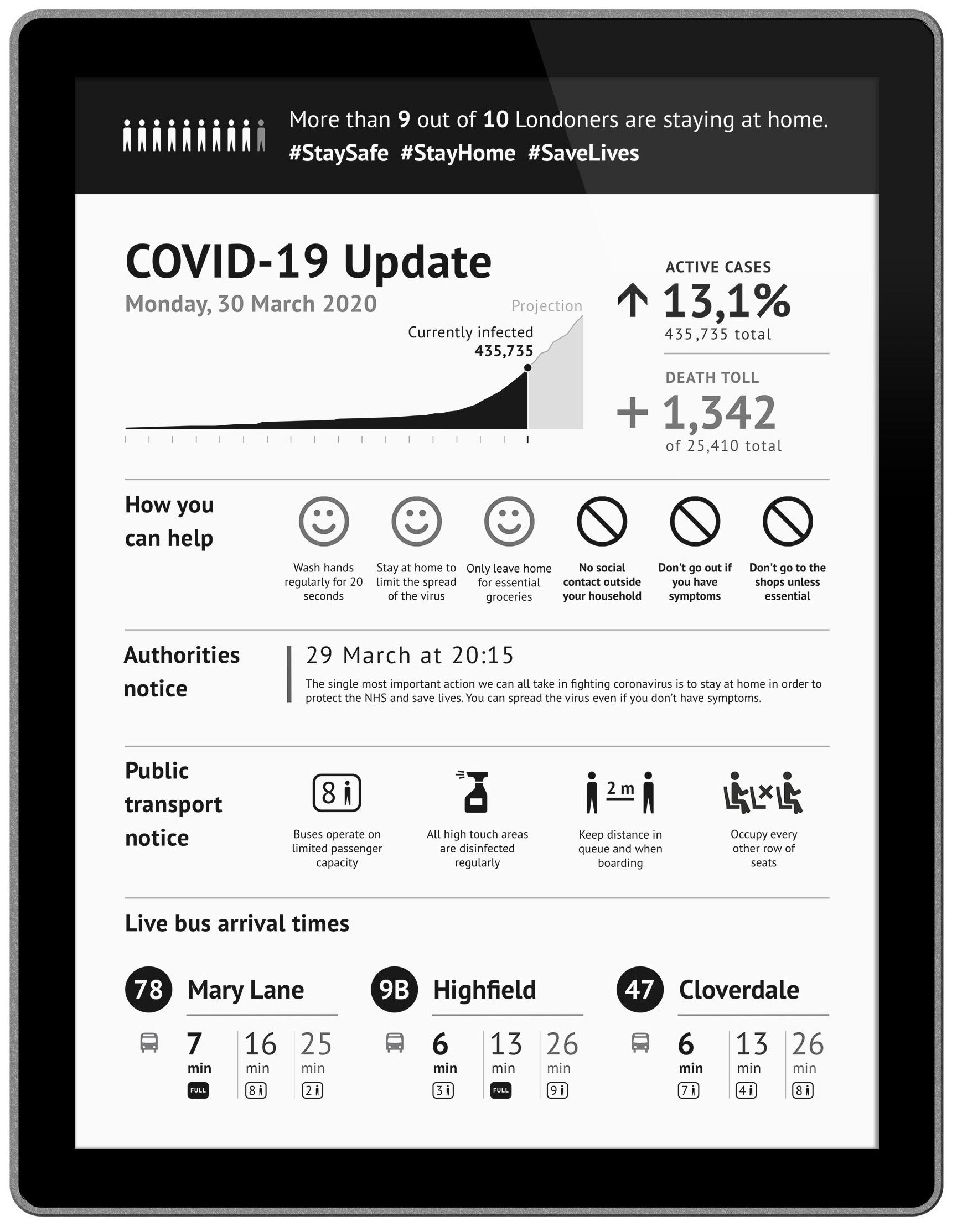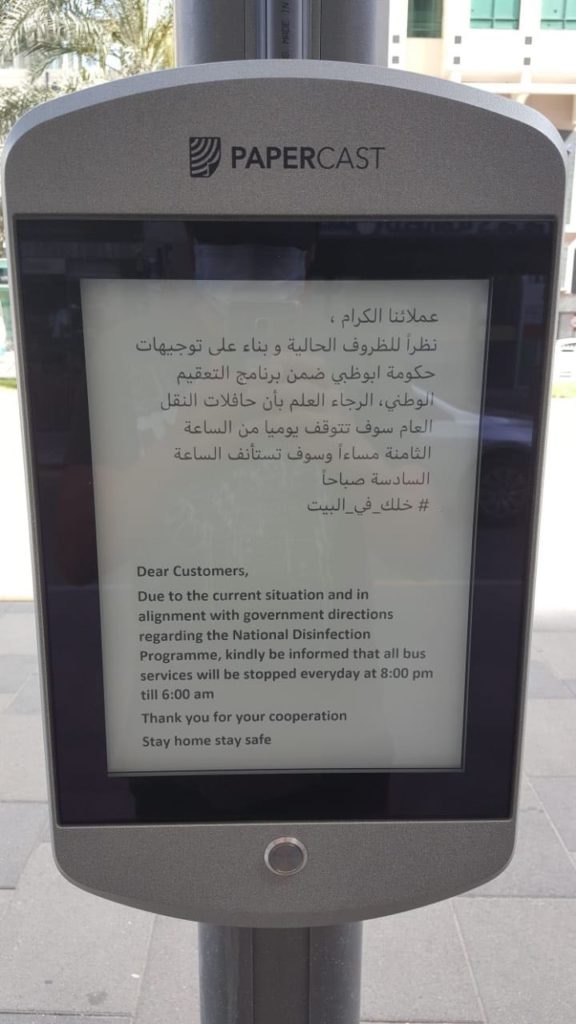
Meet the Papercast CMS Layout Catalogue: A must have resource for sharing visually impactful passenger information
We’re excited to tell you about the Papercast Content Management System (CMS) Layout Catalogue, an…

UPDATED: How Papercast has been used by customers to quickly and easily publish COVID-19 messages (scroll to bottom)
Regardless of the level of threat currently faced in your country, it’s fair to say that nothing could have prepared us for the recent coronavirus (COVID-19) pandemic. The situation has evolved at an alarming rate and the authorities have responded quickly to minimize the impact.
Undoubtedly, your priority right now is to ensure that everyone working in and using public transport is safe. Useful resources including the UITP Factsheet and The Shenzhen Bus Group Report have already been produced to provide guidance on preparedness for public transport networks.
In this blog, we look at the important role that passenger information and communication plays during these challenging times. Some of these recommendations can be quickly and easily implemented if you have the right passenger information systems in place.
Passenger communication is vital in ensuring that transport settings can address coronavirus safely and with complete transparency, while maintaining public confidence in transport services.
Transport agencies have a duty of care to share all potentially valuable information and news, as well as standards of conduct to reduce any risk associated with travel. There will also be service changes and restrictions. It is a constantly changing situation that requires a quick and easy way to get the very latest information to the public, before they travel and during their journey.

1. Communicating service changes and restrictions
In most but exceptional cases, fleet operations will need to change to match demand or discourage unnecessary travel in accordance with government directives. You may also need to adjust services to allow for limited resources due to increased workforce absence. Any service alterations will need to be communicated to travellers and reflected on service schedules. This should all be communicated in advance where possible or in real-time as it happens.
2. Raising awareness of the risks and prevention measures
Public transport agencies have a responsibility to reinforce key messages, such as washing hands before and after travel, limiting contact with other people and what to do if feeling unwell. In some cases, public health authorities have created publicity material in the form of posters and leaflets. However, it may not be practical to distribute these across the transport network at a time when resources are already stretched and when mobility has been restricted.
3. Communicating standards of conduct
While transport agencies act as a conduit for government information, you will also have your own need to communicate. It is likely that you have implemented measures to ensure the safety and reduce the risk to your workforce and your passengers. This could be around reducing passenger capacity, limiting contact, social distancing, personal hygiene and sanitising fleets. In order to enforce these measures, maintain public confidence and safeguard your reputation, you will need to make your service users aware of these new and changing standards of conduct.
4. Sharing valuable information and news
Events surrounding the coronavirus have happened so quickly and the authorities have acted rapidly to protect our society. This has resulted in new updates, discoveries, guidance and restrictions, with announcements coming out by the hour (or minute in some cases). Not only does this information help to reinforce the key messages around managing the risks but sharing it with your passengers supports your efforts to keep them informed.
All of this information can be easily and instantly shared using a passenger information system and reflected in real-time on passenger information displays.

NOTE: The data used in this example is for conceptual purposes only.
It is not intended to be an accurate representation from official sources.
Papercast e-paper displays provide the perfect solution for transport agencies that need an easy to implement real-time passenger information technology for bus stops. Read this article for the top five things you need to know about Papercast e-paper displays, but the most important to note it the flexibility you have with regards to the type of content you can show on the displays.
The reality is that it is unlikely that coronavirus will be completely eradicated in the near future. This means that extra precautions against the spread will remain a high priority, even when ‘business as usual’ gradually resumes. Looking ahead, when social distancing and global lockdown is behind us, attention will be given to lessen the impact of any future novel contagions.
There is no doubt that this will change life as we know it. Whether you are in crisis mode, thinking about how you will get back to ‘business as usual’ or looking ahead to the future, Papercast can help.

Transport for London, United Kingdom

Cambridgeshire, United Kingdom

Long Beach Transit, California

Abu Dhabi, UAE

Celje, Slovenia

We’re excited to tell you about the Papercast Content Management System (CMS) Layout Catalogue, an…

The REACT Trigger System is now available on Papercast displays We’re excited to share that…